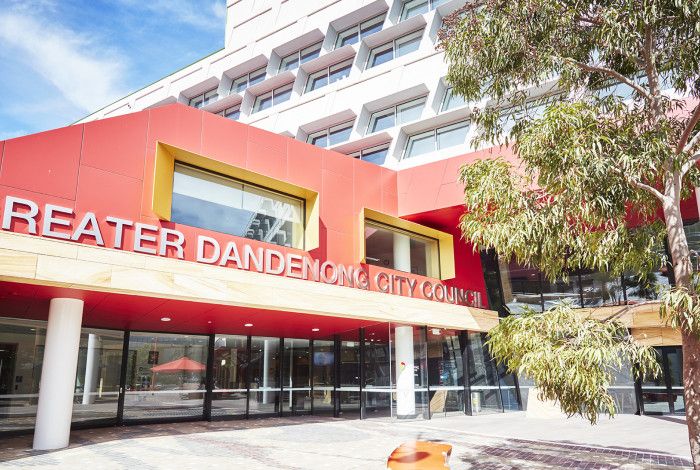Council is committed to fostering a safe, inclusive, and respectful work environment for all employees. Sexual Harassment, Sex-Based Harassment and Gendered Violence are serious issues and totally unacceptable, and we are dedicated to preventing it through awareness, education, and clear guidelines.
Council's Commitment is:
- Prevention - Creating a workplace culture that promotes respect, equality, and dignity.
- Education - Providing training to help employees recognize and prevent sexual harassment and gendered violence.
- Reporting - Encouraging prompt reporting of any incidents.
- Investigation - Ensuring that all complaints are thoroughly and confidentially investigated.
- Zero Tolerance - Implementing a zero-tolerance policy for sexual harassment and gendered violence.
Watch Work-related Gendered Violence Video
Description and Types of Sex-based Harassment
Sex-Based Harassment
Sex-Based Harassment is a form of harassment that targets someone based on their sex, gender, or gender identity and may include (but not exclusive):
- Derogatory Comments: Making sexist or offensive remarks or jokes about someone's sex or gender identity.
- Unwanted Advances: Engaging in unwelcome sexual advances, which can include inappropriate touching or suggestive propositions.
- Gender Stereotyping: Assuming that certain roles or behaviors are expected from coworkers based on their gender, contributing to discrimination and bias.
- Sexual Bullying: Engaging in bullying behaviors with a focus on a coworker's gender or sexual orientation, which can include spreading rumors or using derogatory labels.
- Insults or taunts: Based on sex or gender.
Sexual Harassment
Sexual harassment means any unwelcome sexual behaviour that a reasonable person could anticipate may make another person feel offended, intimidated or humiliated in that situation. Unwelcome behaviour means unwanted or uninvited behaviour that makes a person feel offended, embarrassed or frightened. Whether behaviour is unwelcome is a question for the person harassed. Sexual harassment happens in person, over the phone and online, including via social media and may include (but not exclusive):
- Inappropriate physical contact: Making unsolicited sexual or physical advances towards a coworker, including unwelcome touching, hugging, or kissing, without their consent.
- Sexual Comments or Jokes: sexually suggestive comments or jokes that offend or intimidate, or displaying explicit materials in the workplace, contributing to a hostile work environment.
- Quid Pro Quo Harassment: Offering employment benefits or threatening negative consequences in exchange for sexual favors.
- Inappropriate staring or leering.
- Intrusive questions about someone’s private life or body or physical appearance.
- Unnecessary contact, sexual gestures, indecent exposure or inappropriate display of the body.
- Sexually explicit comments made in person or in writing, or indecent messages, phone calls or emails—including the use of emojis with sexual connotations.
- Sexually explicit gifts, images, videos, cartoons, drawings, photographs, or jokes.
- Sharing or threatening to share intimate images or video without consent.
- Repeated or inappropriate invitations to go out on dates.
Gendered Violence
Gendered violence refers to violence and harm directed at individuals because of their gender. It can encompass various forms of physical, emotional, or psychological harm and may include (but not exclusive):
- Domestic Violence Spillover: When domestic violence issues spill into the workplace, potentially affecting the safety and productivity of an employee.
- Workplace Sexual Assault: Any non-consensual sexual activity in the workplace, which can involve coworkers, supervisors, or members of the community.
- Workplace Stalking: Unwanted and persistent attention or harassment, creating fear and distress.
- Gender-Based Discrimination and Harassment: Discriminatory behavior targeting employees due to their gender, which can lead to a hostile work environment.
Employee's Role
Every employee plays a role in creating a harassment-free workplace. This is how we can stop this behavior.
- Speak Up: If you witness or experience harassment, report it.
- Support: Provide support and empathy to colleagues who may have experienced harassment.
- Educate: Encourage your peers to participate in training and awareness programs.
Reporting Sexual Harassment
If you experience or witness any form of sexual harassment within our organisation, we encourage you to report it. We take all complaints seriously and will ensure your confidentiality and protection.
Speak up is about everyone feeling confident to speak up and act on or report inappropriate workplace behaviour or misconduct, whether the behaviour was directed at you, or you saw it. Council has a secure reporting platform called Whispli which allows you to make reports - anonymously if you prefer. Visit the Speak Up webpage to find out more about Council’s anonymous reporting platform and how it works.
Council's Appropriate Workplace Behaviours Policy; Workplace Behavioural Concerns Resolution Policy and Procedures; as well as the Prevention of Bullying and Violence Guidelines set out the rights, responsibilities and resolution strategies related to workplace behavioural concerns. Read more information on the Appropriate Workplace Behaviours webpage.
Support and Resources
We understand that reporting an incident can be difficult. We offer support and resources to help those affected by sexual harassment:
Council Support
If you are concerned about a behaviour you are experiencing or have witnessed, don’t hesitate to reach out to the below who can provide additional information, provide emotional support and guide you through the reporting process (if needed):
- Team Leader Organisational Development (Council’s designated EO Officer)
- A member of the Organisational Development Team
- Your supervisor, any Council Supervisor, Manager, or Director
- Appropriate Workplace Behaviour Contact Representatives
- Union Representatives
- Employee Assistance Program (EAP): Access confidential counselling services to help you cope with the emotional impact of harassment.
Prevention and Training
Prevention is a key aspect of Council’s approach. We are currently rolling out Sexual Harassment training across the organisation and plan to continue this into next year. Currently all leaders and some staff have completed this training. This training will also be included as part of Council’s induction program.
- What is Sexual Harassment and Gendered Violence: Recognising different forms of harassment.
- Preventing Harassment: Strategies to maintain a respectful workplace.
- Reporting: Understanding how to report incidents safely and effectively.
Watch YouTube Videos
What is a Microaggression?
Video resources to highlight Active Bystander Information
Step 1 – Notice the Situation
Step 2 – Choose to take positive action
Example 1
Example 2
Step 3 – Act take a course of action
Resource Tool
The Victorian Human Rights Equal Opportunity Commission (VHREOC) response tool can help you understand when something at work crosses the line into sexual harassment. It shares information and advice on how to respond to help you weigh up options and provides a directory of support services to get you the help you may need.
Contact Us
If you have any questions, concerns, or need further information, please contact your line manager or our Organisational Development team at zzOrgDevAdmin@cgd.vic.gov.au.
Remember, we are all responsible for maintaining a workplace free from sexual harassment. Let's work together to create a safe, respectful, and inclusive environment for everyone.





